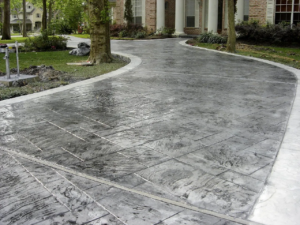Portland Delivery Services are businesses that offer transportation and delivery services for goods and packages. They may operate on a local, regional, or national level.

Delivery Services offer greater flexibility than standard delivery options. This is beneficial for busy professionals, night shift workers, and other customers with irregular schedules.
Delivery reliability is a key measure of supply chain performance. It is defined as the percentage of deliveries that reach the customer within the promised time window (requested by the customer or agreed in advance). Increasing delivery reliability significantly increases customer satisfaction and strengthens trust in the company, which can lead to long-term success. It is also a good indicator of the overall quality of a service.
To improve delivery reliability, companies must first identify areas where improvement is needed. They can do this by analyzing data and evaluating feedback. Then, they can make necessary adjustments to their processes and implement corrective actions. As a result, the number of missed deliveries will decline and the company will be able to provide better service to customers.
The benefits of reliable delivery services are numerous. They can save businesses time and money and increase customer loyalty. In addition, they can help businesses build a strong reputation with their customers, which can lead to word-of-mouth marketing and more business.
Reliable delivery services are an essential component of any business that offers online shopping and e-commerce. Customers expect fast and accurate deliveries, and any delay can cause dissatisfaction and loss of business. A reliable and consistent delivery service can improve the customer experience and boost brand reputation, resulting in more business opportunities.
Reliable delivery services can also help businesses to reduce costs by reducing the amount of returns, replacements, and customer complaints. In addition, they can help to ensure that all orders are delivered on time and in good condition. As a result, they can save businesses a lot of money and increase their profits. Moreover, they can also help to create a positive reputation and gain a competitive advantage in the marketplace.
Flexibility
In today’s customer-centric market, flexible delivery options are key to fostering loyalty and building brand trust. This type of flexibility ensures that customers can receive their orders when they want, where they want, and how they want them. It also allows businesses to react to fluctuations in demand and unforeseen events, maintaining service continuity and ensuring customer satisfaction.
Flexibility in delivery services can help businesses reduce costs and increase sales. It can be achieved by offering different options, such as pickup points and lockers, and specifying delivery time slots. It can also be achieved by increasing the size of the fleet to accommodate increased demand or by implementing an automated system that allows customers to change their delivery preferences.
Another way to increase delivery flexibility is to offer a variety of payment methods. This can be especially beneficial for companies that operate on a subscription model, where customers pay a monthly fee to have their products delivered. Additionally, allowing customers to cancel their subscriptions can be helpful in reducing the risk of losing customers.
Finally, allowing customers to pick up their deliveries at a store can be an effective way to decrease transportation costs and improve efficiency. This can be especially helpful for businesses that have a large number of retail locations.
When planning a delivery service, it is important to consider the geographical scope of your service area. A larger area will mean more opportunities to earn revenue, but may also result in higher fuel and vehicle maintenance costs. It is also important to consider the population density of the area. High-density areas may have more delivery opportunities and shorter travel distances, but may also pose challenges such as traffic congestion or limited parking.
Efficiency
Delivery efficiency refers to how fast, accurate, and cost-effective a delivery service is. This translates to lower costs, higher customer satisfaction ratings, and increased profitability for logistics-reliant businesses. To improve efficiency, a business must analyze the entire delivery process from start to finish and identify areas for improvement. Then, they can implement solutions that will meet delivery goals and expectations.
For example, a streamlined order processing system can help reduce the time it takes for orders to be processed and delivered. This will allow employees to focus on other important tasks, like addressing customer issues and providing better services. Similarly, optimizing delivery routes and using cross-docking techniques can minimize wasted time and fuel, thereby saving money. Additionally, utilizing smart data analytics for accurate demand forecasting can help businesses allocate resources efficiently and ensure delivery timelines are met.
Another way to increase delivery efficiency is to provide customers with accurate ETAs and regular updates on the status of their deliveries. This builds trust and increases customer loyalty. Additionally, offering delivery flexibility, such as evening or weekend options, can help meet customer needs and preferences.
Finally, a delivery service that utilizes vehicles equipped with GPS systems can optimize routes to save on gas and vehicle maintenance costs. This can be especially helpful for a business that has many customers in different locations. In addition, a delivery service that uses drones or other unmanned aerial vehicles can offer an alternative mode of transportation for small items. This can be particularly useful if customers live in remote locations or have limited access to traditional modes of transportation. This type of service is ideal for perishables and other small products.
Security
With data breaches costing companies an average of $36,000, securing deliveries is no longer just a business necessity; it’s also a competitive imperative. Providing efficient and secure delivery services demonstrates a level of professionalism and commitment to customer satisfaction that can help you build long-term client loyalty and referrals.
Secure courier services offer a specialized approach to package transportation, incorporating a range of security features that go beyond the physical protection of packages. These include tamper-proof containers, real-time tracking mechanisms and authentication protocols. The heightened focus on security can be especially beneficial for businesses that need to transport high-value items or confidential documents.
Choosing the right secure delivery service depends on a number of factors, including reliability, speed, and cost. Businesses should identify their shipment requirements, prioritize key factors, research and shortlist providers, review their track record and cost structures, and scrutinize security features to choose the best option for them.
In addition to leveraging technology to optimize delivery routes, businesses can also take advantage of new technologies like drones and autonomous vehicles to enhance efficiency and safety. They can also implement a secure payment system to protect the integrity of their online transactions. Moreover, they can use on-demand rush delivery solutions to provide a seamless experience for their customers, such as Rapidus’ on-demand delivery service, which uses a ridesharing network of drivers available 24/7 in the San Francisco Bay Area.
With a booming delivery industry, businesses need to embrace technological advancements to ensure they deliver goods on time and in good condition. They can leverage technologies such as advanced tracking systems, route optimization algorithms, and ridesharing networks to enhance their delivery processes, reduce costs, and meet the demands of a fast-paced economy.
Customer Satisfaction
Customer satisfaction is a key element of any business, but it is especially important in delivery services. Efficient delivery processes can have a direct impact on customer perceptions and loyalty, while poor service can damage brand reputation and lead to churn.
A high customer satisfaction rate can help you build a strong brand image, increase sales, and attract new customers. To improve customer satisfaction, you must offer fast, reliable service and provide a seamless experience from order to delivery. A seamless process can also encourage repeat purchases and support loyalty and retention.
In today’s digital age, customers often base their loyalty on more than just the product or service they receive. They are more likely to consider the overall customer experience – from browsing to unboxing – in their decision-making process.
Whether you’re shipping products locally or internationally, customer satisfaction is the key to success. To achieve this, you must ensure that your products arrive on time and in good condition. This can be achieved by using a quality delivery service that offers tracking and monitoring services. Moreover, you should also make sure that your delivery staff are well trained. This includes ensuring that they are aware of the importance of customer service and how to handle difficult situations.
Another benefit of using a delivery service is that it can help you save money on overhead costs. This can help you maintain a competitive price for your products and services, enabling you to reach a larger customer base. It can also allow you to focus on other aspects of your business, such as marketing and development. In addition, a quality delivery service can offer flexibility in terms of shipping options. For example, it can provide same-day or next-day delivery for your customers.








